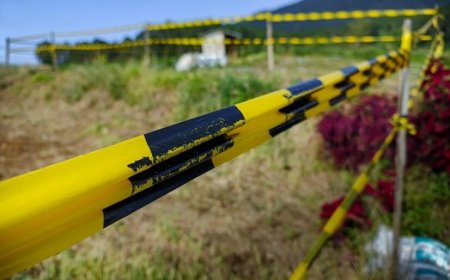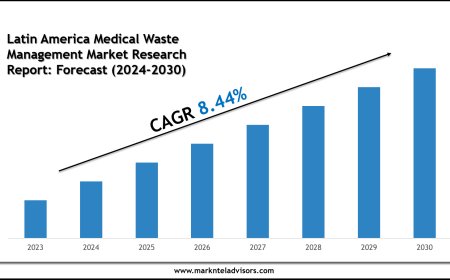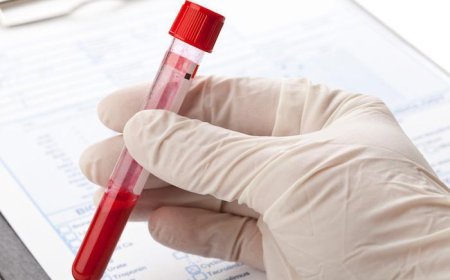What Documents Do You Need for a Doctor at Home Visit?

Getting medical care from the comfort of your own home is becoming more common and convenient. With services like Doctor at home, patients can access healthcare without the stress of travel or long waits. While this option brings ease and comfort, many people arent sure what documents they need to have ready. Understanding what paperwork is necessary can make the process smooth and efficient. This article walks through the essential documents required for a Doctor at home Dubaiand why each plays an important role.
Why Documentation Matters for a Doctor at Home
Proper documentation helps medical professionals understand the patient's history, needs, and any ongoing treatments. Since the setting is outside a traditional clinic, having the right information ensures accurate care and timely decisions. From personal identification to medical records, these documents help create a clear picture for the healthcare provider.
Basic Identification is the First Step
Before any visit takes place, confirming identity is crucial. A valid form of ID verifies the patients details and allows the healthcare provider to match the request to the correct individual. It also adds a layer of safety, especially when medical personnel are entering someones private space. A national ID card, passport, or any government-issued identification usually works well for this purpose.
Sharing Medical History for Better Understanding
Medical history documents are among the most valuable pieces of information during a Doctor at home visit. These records help the doctor understand past conditions, allergies, previous surgeries, and ongoing medications. While patients can share this verbally, having written proof adds accuracy. A copy of past diagnostic reports, vaccination records, or summaries from prior visits are useful to have on hand.
Details About Current Medications
Current medication records guide doctors in evaluating treatment compatibility and avoiding harmful interactions. A simple list with medication names, dosages, and timing is often enough. Bringing original packaging or prescription slips can also support the information. These details help ensure any new prescription or adjustment considers existing medications.
Lab Reports and Diagnostic Results
If the home visit is scheduled for a follow-up or chronic condition management, lab reports and diagnostic images can offer insight into the patient's recent health trends. Blood tests, imaging results, or ECG readings can influence treatment direction during a Doctor at home consultation. If digital versions are available, sending them in advance or showing them during the visit can save time and avoid repeat testing.
Referral Notes or Doctor Recommendations
In some cases, a patient might be referred for a Doctor at home visit by another medical professional. If a referral note exists, its helpful to share this during the visit. This note can outline the reason for the referral, recommended assessments, or continuing care instructions. Having this note ensures continuity in the patients treatment plan.
Insurance or Health Coverage Documents
For those using a health insurance plan or company-provided coverage, keeping documentation related to coverage ready is important. While coverage procedures may vary, sharing relevant documents with the medical team ensures that the services align with what the plan allows. It can also prevent misunderstandings about what services are included under the home visit.
Emergency Contact and Support Information
Though not always required, providing an emergency contact is recommended during a Doctor at home visit. This is especially useful for elderly patients or individuals living alone. An emergency contact can support communication and provide additional context to the doctor if needed. If caregivers are present, their contact details and role can also be noted.
Consent Forms or Authorization Letters
Depending on the nature of the service, some Doctor at home providers may ask for a signed consent form before examination or treatment. This is common for procedures that involve injections, certain diagnostics, or minor medical care. If the patient is unable to sign due to medical reasons, an authorized family member can provide consent through a written or signed letter.
Personal Health Summary for Quick Reference
While official records are essential, a personal health summary written by the patient or caregiver can also be beneficial. This document offers a quick overview of recent symptoms, pain points, or health concerns. Since the doctor may not have access to the full medical file in real time, a brief summary can help focus the visit on key issues. It also allows the patient to prepare in advance and avoid missing important details.
Any Relevant Discharge Papers or Previous Home Visit Notes
If the patient has previously been discharged from hospital care or has had earlier Doctor at home visits, keeping those notes is helpful. These documents provide continuity, especially if the current doctor is new to the case. Discharge summaries often contain useful information such as recovery plans, medication updates, and activity restrictions.
Keeping Digital Copies Handy
Today, many patients keep their records digitally. Scanned files, PDF reports, or even photos of prescriptions stored on a mobile phone or tablet can be just as effective. Before the visit, organizing these files into one folder can streamline the interaction. If possible, sending digital files to the service beforehand can help the visiting doctor prepare better.

What Not to Worry About
Patients often assume they need every health-related document for a Doctor at home visit, but thats not the case. Only documents that relate to the current concern or ongoing health condition need to be presented. Unrelated or outdated records may not be necessary unless specifically requested. Staying focused on relevant information saves time and improves the quality of care.
Preparing Ahead for a Smooth Experience
Planning ahead helps reduce last-minute stress. Before the scheduled visit, patients or caregivers can gather the documents in a single folder, either physical or digital. They should also prepare a quiet, clean space for the visit and make sure essentials like water, tissues, or a chair are ready. These small preparations make a big difference in how effective and smooth the visit turns out.
Conclusion: Being Ready for a Doctor at Home Visit
Having a Doctor at home in Dubaimakes healthcare more accessible and personalized. To make the most of this experience, being prepared with the right documents is essential. Identification, medical history, current prescriptions, test results, and any notes from previous care can all support the visits success. Organizing these in advance helps the doctor provide tailored, efficient, and accurate careall without the need to leave home.
A little preparation goes a long way. With the right paperwork and a thoughtful approach, a Doctor at home visit becomes a stress-free step toward better health.





































